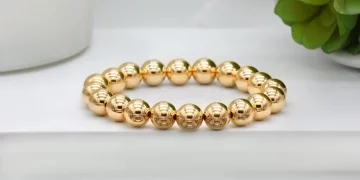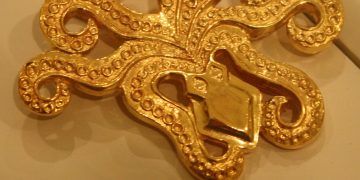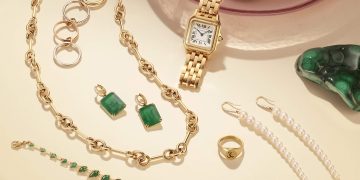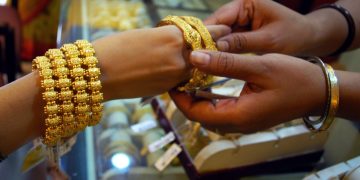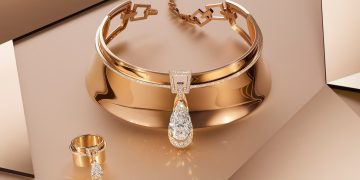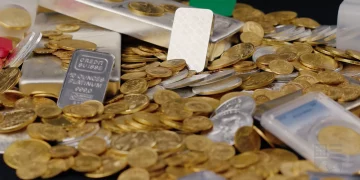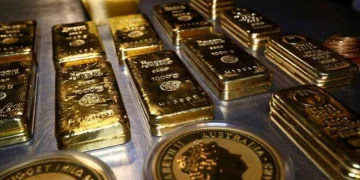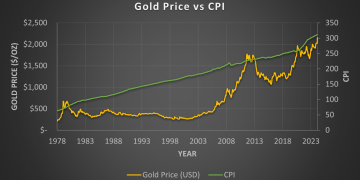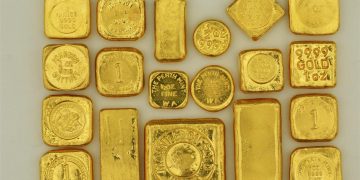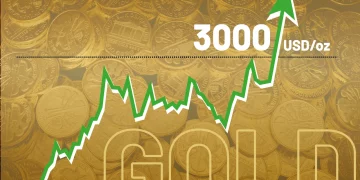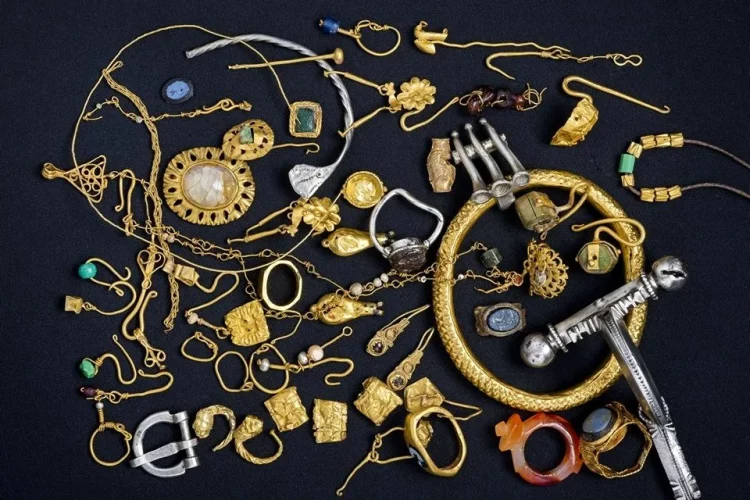Gold jewelry has long been a symbol of wealth, luxury, and status. From ancient civilizations to modern-day collectors, gold has remained a preferred material in crafting beautiful, coveted jewelry pieces. Its enduring allure is not only due to its aesthetic value but also because of its role as an investment and store of wealth. The historical evolution of gold jewelry, its pricing trends, and its status as both a luxury item and a financial asset offer valuable insights into the present and future of the market. This article delves into the rich history of gold jewelry, explores the factors that have influenced its pricing and demand over the years, and highlights how past trends continue to shape modern gold jewelry styles and investments.
Historical Data on Gold Jewelry Pricing and Market Demand
The history of gold jewelry dates back thousands of years. Ancient Egyptians, Greeks, and Romans were among the first to recognize the inherent beauty and permanence of gold, using it to create intricate adornments for royalty and the elite. However, gold’s journey as both a decorative and valuable asset has not been linear. Pricing and market demand have fluctuated based on political, economic, and social conditions, with periods of high demand and soaring prices followed by declines due to changes in wealth distribution, technological advancements, or shifts in fashion.
In ancient times, the value of gold was closely linked to the weight and purity of the metal. Gold jewelry was primarily a status symbol, a way to display wealth and social standing. For example, during Egypt’s New Kingdom (c. 1550–1070 BCE), pharaohs and high-ranking officials wore elaborate gold jewelry as a sign of their power and divinity. This period marked the first major surge in gold jewelry’s association with luxury, as the elite class displayed their wealth through ornate gold artifacts.
Throughout the Middle Ages and Renaissance, gold jewelry continued to be crafted for nobility and royalty. However, by the 17th and 18th centuries, gold jewelry became more accessible to the burgeoning merchant and middle classes, especially in Europe. This period saw a rise in the demand for gold jewelry as an investment, particularly during times of economic uncertainty. The fluctuations in the price of gold during this time were often influenced by the supply and demand dynamics of mining operations, colonial expansion, and the increasing role of gold in global trade.
The 20th century brought a significant shift in the gold jewelry market. The rise of mass production and the democratization of luxury goods made gold jewelry more widely available. As a result, the price of gold became more volatile. The introduction of gold-backed currency, the gold standard, and the establishment of gold trading markets, such as the London Gold Market, allowed for more standardized pricing mechanisms. The 1970s oil crisis, hyperinflation, and geopolitical tensions triggered dramatic price increases in gold, making it a highly sought-after commodity both as a jewelry material and an investment.
In recent decades, gold jewelry has experienced steady price growth, reflecting broader economic trends. The 2008 global financial crisis, for example, led to a surge in demand for gold as a safe-haven asset. Investors flocked to gold as a way to hedge against inflation and market uncertainty. Similarly, gold’s value soared during the COVID-19 pandemic, as governments around the world introduced massive stimulus packages, causing currency devaluation and increased interest in gold as a store of value.
Evolution of Gold Jewelry as Both a Luxury Item and an Investment
Gold jewelry has long been synonymous with luxury, but its role as an investment asset has evolved significantly over the centuries. While early gold jewelry was reserved primarily for royalty and the elite, over time, it began to be seen as a valuable store of wealth that could be passed down through generations.
In ancient times, gold jewelry was mostly viewed as an object of display, a symbol of one’s social status. The Egyptians, for example, used gold jewelry as both a form of adornment and a protective amulet. Gold’s association with immortality and divine power was deeply ingrained in Egyptian culture, as evidenced by the gold jewelry found in the tombs of pharaohs and high priests. These objects were not only luxuries but also forms of currency and investment, with their value often far exceeding their immediate decorative purpose.
During the medieval and Renaissance periods, gold jewelry was still primarily a luxury item, but it also began to serve as a form of investment. As political and economic instability in Europe led to fluctuations in currency values, gold jewelry became a more practical way to store wealth. Families and merchants began purchasing gold jewelry not only for its beauty but also as a way to safeguard their savings. During times of financial crises or war, people would often melt down their jewelry to sell for cash or barter for goods.
By the late 19th and early 20th centuries, as gold became a key component of the global economy with the gold standard and gold-backed currency, gold jewelry increasingly took on a dual role as both a luxury item and an investment. In the post-World War II era, the booming global economy and the rise of consumerism brought gold jewelry to a wider audience, making it more accessible to the middle class. However, even as it became more affordable, gold’s inherent value as a store of wealth remained unchanged.
In the modern era, the lines between luxury and investment have blurred even further. While gold jewelry continues to be a symbol of wealth and status, it is also seen as a financial asset that can offer protection against inflation, currency devaluation, and economic uncertainty. In fact, many investors now purchase gold jewelry not just for its aesthetic appeal but as part of a broader strategy to diversify their portfolios and hedge against market risk. Gold jewelry has become an important part of the financial landscape, offering both aesthetic and tangible value.
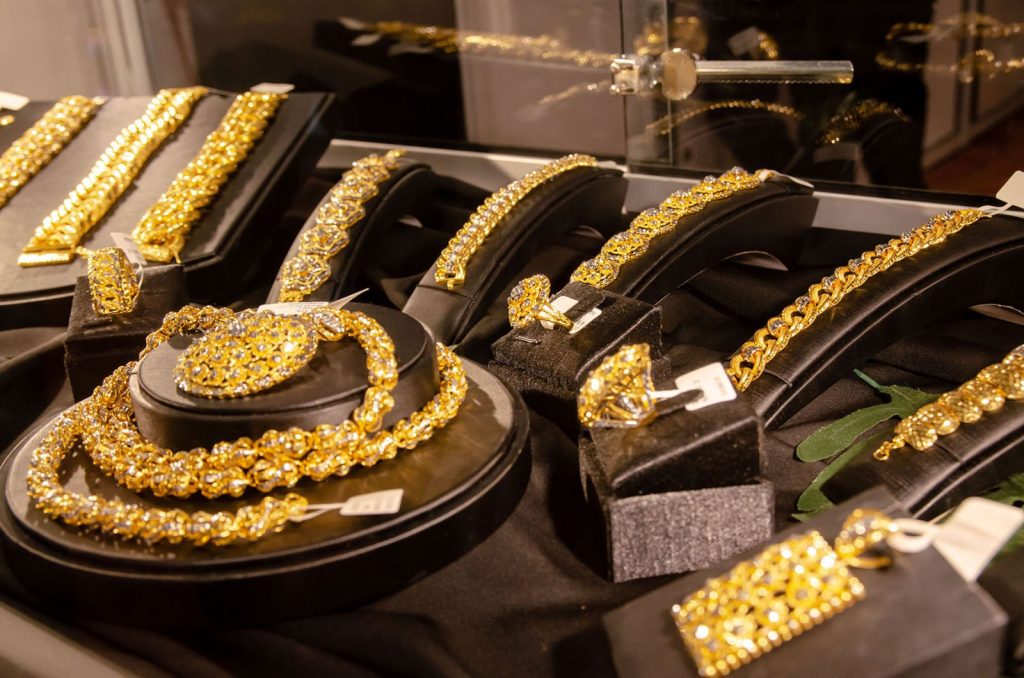
Insights into the Factors that Have Historically Driven Gold Jewelry Prices
Several factors have historically driven gold jewelry prices, and these same factors continue to play a significant role in shaping the market today. Among the most important factors are global economic conditions, supply and demand dynamics, geopolitical events, and changes in fashion.
1. Economic Factors
The most significant driver of gold jewelry prices has always been the state of the global economy. Economic instability, inflation, and currency devaluation have historically driven up demand for gold as a store of value. For example, during the 1970s oil crisis, gold prices surged as investors sought protection against rising inflation and the decline in the purchasing power of paper currencies. Similarly, during periods of economic uncertainty, such as the 2008 financial crisis or the COVID-19 pandemic, gold prices have risen as investors flock to the asset to preserve their wealth.
2. Supply and Demand Dynamics
Gold’s limited supply and its demand as a luxury item and an investment asset are key factors that influence its price. The global supply of gold is constrained by mining operations, which have become increasingly expensive and resource-intensive. As gold becomes more difficult to mine, the supply of gold jewelry may diminish, causing prices to rise. Additionally, growing demand from emerging markets, particularly in Asia, has also contributed to higher prices. As middle-class populations in countries like India and China grow, demand for gold jewelry has surged, driving up prices in global markets.
3. Geopolitical Events
Gold prices have always been influenced by geopolitical events, especially wars, political instability, and international trade relations. When tensions rise between nations, investors often seek safe-haven assets like gold to protect their capital from the risk of currency devaluation or financial collapse. The 2008 global financial crisis is a prime example of how geopolitical instability can trigger a surge in gold demand, as the financial system teetered on the brink of collapse.
4. Fashion and Trends
Gold jewelry’s popularity is also heavily influenced by changing fashion trends. Over the years, different styles of gold jewelry have come in and out of fashion, with designers introducing new techniques and designs to capture the public’s interest. For example, in the 1980s and 1990s, chunky gold jewelry pieces were highly fashionable, driving up demand. In more recent years, minimalist and sustainable jewelry trends have reshaped the market, influencing the types of gold jewelry that are in demand.
How Past Trends Are Influencing Modern Gold Jewelry Styles and Investments
The historical appeal of gold jewelry continues to shape contemporary design and investment strategies. Today, as consumers become more conscious of sustainability and ethical sourcing, the gold jewelry market is evolving to meet these demands while maintaining the timeless allure of gold.
One of the most significant trends in recent years is the growing interest in sustainable and ethically sourced gold jewelry. As consumers become more aware of the environmental and social impact of their purchasing decisions, there is an increasing demand for gold that is mined responsibly. Many jewelers now offer “fair trade” or “eco-friendly” gold, which appeals to environmentally conscious buyers and investors who want to ensure that their purchases align with their values.
Additionally, the growing popularity of vintage and antique gold jewelry has spurred a rise in demand for older pieces that have historical significance. Collectors are increasingly turning to gold jewelry that has been passed down through generations, as these pieces offer both aesthetic value and potential investment returns. The demand for vintage gold jewelry has led to a surge in auction prices for rare and unique items, reflecting a broader appreciation for the historical significance of gold as both a luxury item and a store of value.
In terms of investment, gold jewelry is increasingly seen as a way to diversify portfolios and hedge against economic risk. As global economic uncertainty continues to rise, more investors are turning to gold jewelry as a stable, long-term investment that can provide both financial security and aesthetic enjoyment. Many investors now view gold jewelry as an asset class that combines both traditional wealth preservation and modern luxury.
Conclusion
Gold jewelry’s timeless appeal is a result of its historical significance as both a luxury item and an investment asset. The price of gold jewelry has been influenced by various factors over the centuries, including economic conditions, geopolitical events, and shifting fashion trends. As these historical trends continue to influence modern gold jewelry styles and investment strategies, the market remains dynamic and ever-evolving. Whether as a valuable asset or a beautiful adornment, gold jewelry continues to captivate and inspire people around the world, securing its place as one of the most enduring symbols of wealth, status, and timeless beauty.

